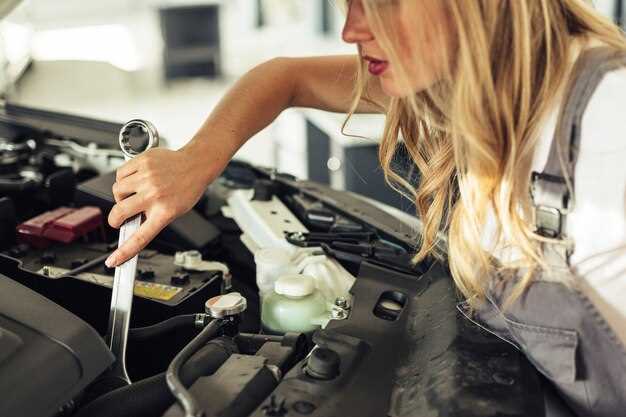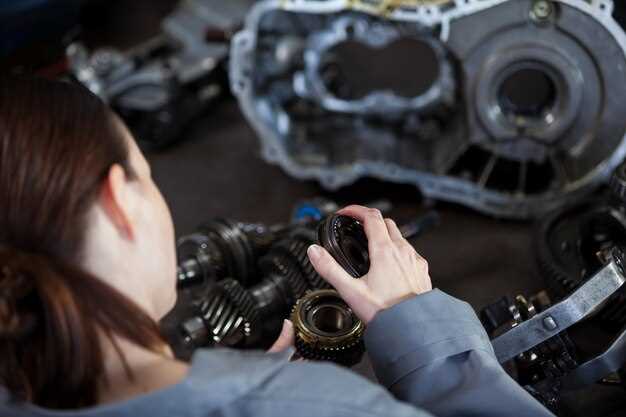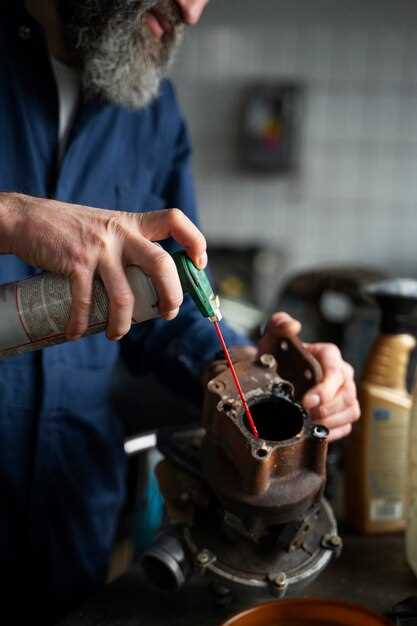
Carbureted engines are often celebrated for their simplicity and ease of tuning, but they require specific maintenance practices to ensure optimal performance. Unlike modern fuel-injected engines, carbureted systems rely on a mechanical method of mixing air and fuel, which can lead to unique challenges. Regular upkeep can significantly enhance their functionality and longevity, making it essential for enthusiasts and everyday drivers alike.
Understanding the Basics of a carbureted engine is crucial. These engines work by drawing air through the carburetor, where it mixes with fuel before entering the combustion chamber. Due to their design, carbureted engines can be sensitive to changes in temperature, humidity, and altitude, which can affect air-fuel ratios. Recognizing these factors and how they influence engine performance is the first step in effective maintenance.
Another important aspect is regular inspection and cleaning. Over time, dirt and debris can accumulate in the carburetor, impeding airflow and fuel delivery. This could lead to poor acceleration, reduced fuel efficiency, and even stalling. Frequent checks and a thorough cleaning routine will not only prevent these issues but also enhance throttle response and overall engine efficiency.
Additionally, keeping an eye on fuel quality is vital for carbureted engines. Old or contaminated fuel can cause improper combustion and damage internal components. Always use fresh fuel and consider adding a fuel stabilizer to minimize the risks of oxidation and gum formation, particularly if the vehicle is not used frequently.
Regularly Check and Replace Fuel Filters
Fuel filters play a crucial role in maintaining the performance of your carbureted engine. They are designed to trap dirt, debris, and contaminants present in the fuel before it reaches the carburetor. Over time, these filters can become clogged, leading to reduced fuel flow and potentially compromising engine performance.
To ensure optimal engine operation, it is essential to check the fuel filter regularly. This can typically be done during routine maintenance checks. Inspect the filter for any signs of dirt buildup or damage. A clogged filter may restrict fuel flow, resulting in poor acceleration, stalling, or difficulty starting the engine.
Replacement intervals for fuel filters vary based on the vehicle and the type of filter used. Consult your owner’s manual for specific recommendations, but a good rule of thumb is to replace the fuel filter every 10,000 to 15,000 miles. If you frequently drive in harsh conditions, such as dusty environments or stop-and-go traffic, more frequent changes may be necessary.
When replacing the fuel filter, ensure that you use a high-quality filter compatible with your engine. Installing an inferior or incompatible filter can lead to further issues down the line. After installation, run the engine for a few minutes and check for any leaks around the filter. Regularly monitoring and replacing fuel filters will enhance your carbureted engine’s efficiency and longevity.
Adjust Carburetor Settings for Optimal Performance

Proper carburetor adjustment is essential for achieving optimal engine performance. The carburetor controls the mixture of air and fuel that enters the engine, directly impacting efficiency, power, and emissions. By fine-tuning its settings, you can improve throttle response, fuel efficiency, and overall engine reliability.
Begin the adjustment process by ensuring the engine is warmed up. A cold engine can lead to inaccurate readings and ineffective tuning. Once warmed, inspect the idle speed screw, which regulates the engine’s idle RPM. Adjust this screw until the engine idles smoothly, typically between 600 and 900 RPM, depending on your engine specifications.
Next, focus on the mixture screw, which controls the air-fuel ratio at idle. A good starting point is to turn the mixture screw clockwise until it lightly seats, then back it out one and a half turns. With the engine running, turn the mixture screw slowly in and out to find the highest idle speed. This indicates the optimal air-fuel mixture for your engine at idle.
If your engine experiences hesitation during acceleration, the jetting may need adjustment. Consider changing the main jet or the needle clip position. If the engine bogs down, raising the needle clip can enrich the mixture, while lowering it can lean out the mixture if the engine is running too rich.
After adjustments, conduct a test drive to evaluate the performance. Pay attention to throttle response, acceleration, and engine sound. If necessary, repeat the adjustment process until you achieve the desired results. Regularly check and adjust the carburetor settings as environmental conditions and fuel quality change, ensuring your engine consistently operates at peak performance.
Inspect and Clean Spark Plugs Frequently

Regular inspection and cleaning of spark plugs are crucial for maintaining the performance of a carbureted engine. Spark plugs are responsible for igniting the air-fuel mixture, and their condition directly affects engine efficiency and reliability. Over time, spark plugs can accumulate carbon deposits, oil residue, and other contaminants that can hinder their performance.
Begin by removing the spark plugs using a socket wrench. Inspect them for signs of wear, such as corrosion, cracking, or excessive carbon buildup. A healthy spark plug will have a light tan or gray color on the insulator. If you notice any irregularities, it might be time for a replacement.
Cleaning spark plugs can be performed using a wire brush or a specialized spark plug cleaner. Gently scrub the electrodes and the ceramic insulator to remove carbon deposits without damaging the components. For stubborn buildup, consider soaking the plugs in a solvent designed for this purpose. After cleaning, ensure that the spark plugs are completely dry before reinstallation.
It’s also essential to check the gap between the electrodes using a spark plug gap tool. Maintaining the correct gap is vital for optimal spark efficiency and engine performance. Follow the manufacturer’s specifications for the proper gap setting.
Frequent inspections and cleanings, typically every 10,000 to 20,000 miles, can help you detect potential issues before they become significant problems. By keeping your spark plugs in good condition, you ensure better combustion, improved fuel efficiency, and smooth engine operation.

